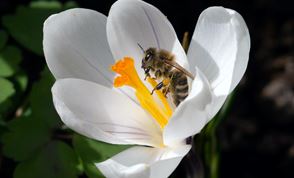6 Butterflies you can spot this summer
Now that Spring has finally arrived and the warmer weather is beginning to creep through, butterflies begin to emerge.
Their colourful wings and gentle fluttering make butterflies a popular sign of spring.
The arrival of butterflies is also an important measure of the effects of weather on our wildlife. But did you know the UK’s rare spring butterflies in 2017 emerged three weeks earlier compared to 2016, and a week earlier than the average? The Butterfly Conservation believe this to be as a result of milder weather.
The Big Butterfly Count is a great way to get involved in nature and help to research and conserve butterflies in the UK, so here are three of the easiest to spot and three of the rarest.
These three butterflies are common across the UK and so shouldn't be too hard to find!
- Common blue butterfly
This charming little countryside resident is a common sight across the UK. Male common blues have violet-blue upper wings with grey-beige undersides. However, females vary from those with predominantly brown upper wings and orange crescents, usually more common in the south, to those with more blue, found farther north and west.

- Painted Lady
When most people think of British butterflies, the Painted Lady comes to mind; a common sight in hedgerows and gardens across the UK. Painted Ladies do not hibernate in Britain; instead they migrate to and from northern Africa. They can arrive in early spring, but late May and June are more usual.

- Peacock
The Peacock Butterfly has brownish-red wings, each with a single, large peacock-feather-like eyespot – used to scare predators. It rests with its wings closed, showing the almost black, well-camouflaged underside. It is one of the most common garden butterflies, found throughout lowland England and Wales.

- Speckled Wood Butterfly
Speckled Woods have brown wings with creamy-yellow spots; there is one black and white eyespot on the forewing and three on the hind. The undersides are patterned orange, yellow and brown.This species is common in woods, scrub and tall vegetation throughout southern England and lowland Wales, and appears to be recolonising in eastern and northern England and Scotland.

- Large White
The Large White is common throughout Britain and is considered a pest by many gardeners, as the caterpillars can severely damage Brassica crops. Migrants from continental Europe join our resident population each summer. Females lay clusters of 40-100 yellowish eggs on the undersides of leaves.

- Orange Tipped
This butterfly has white upper sides to its wings. It is only the males that have orange-tipped forewings; females have small black tips. In both sexes the undersides of the hind wings are mottled with moss-green. The orange tips warn predators that this butterfly is highly distasteful.
If you manage to spot one of these little beauties don’t forget to record it for the Big Butterfly Count!

For more great activities to protect our nature (as well as keep the kids busy), take a read of some more of our top blogs.






